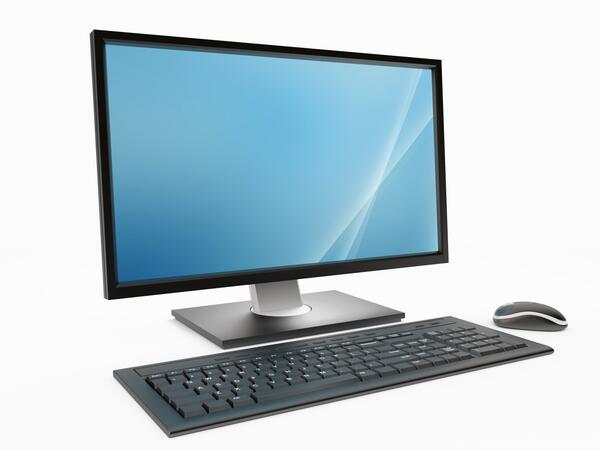
Best Practices for Implementing Patient Care Report Software in EMS Agencies
A patient care report (PCR) is a key document that records important information about the care provided to a patient during an emergency response. This report includes details such as the patient's condition, vital signs, medical history, interventions performed, and any changes observed during transport.
A PCR also serves as a comprehensive record that ensures continuity of care, as it is often shared with hospitals and healthcare providers to give them a clear picture of the patient's status and the care they received before arriving at the facility. Additionally, PCRs play an important role in legal documentation, quality assurance, and billing, offering a clear account of the care provided during an emergency call.
In contrast to traditional paper-based PCR reports, the transition to electronic patient care report (ePCR) software has improved accuracy, efficiency, and access to data. With ePCRs, emergency medical services (EMS) personnel can directly input data into a digital system, which helps to reduce the risk of errors from illegible handwriting or incomplete information.
This digital format also allows for real-time sharing of patient information, so hospitals can prepare for a patient's arrival while the EMS team is still on the way. As EMS PCR software becomes more common, careful planning is essential to ensure that the software is used effectively and meets the needs of EMS agencies.
This article explores key practices to help EMS agencies maximize the advantages of PCR software integration.
1. Create a Detailed Narrative of the Report
One of the core components of effective PCR software use is the ability to create a detailed and accurate narrative of the patient care provided. This narrative should capture the patient’s initial condition, including symptoms, injuries, and any relevant medical history observed or provided by the patient or bystanders. It should also include the interventions provided by EMS personnel, such as oxygen administration, medication dosages, or other treatments. Additionally, it is important to document any changes observed throughout the transport, including fluctuations in vital signs or the patient’s response to treatment.
With detailed documentation, healthcare providers at the receiving facility have a comprehensive understanding of the patient’s condition upon arrival. This can guide their decisions for continued care. Moreover, a well-written narrative is invaluable for compliance purposes, as it provides a clear record for audits, legal considerations, and quality assurance processes.
2. Provide Complete Patient and Transport Information
Accurate and complete information is also key to an effective patient care report. PCR software should be used to record essential details such as patient demographics, vital signs, clinical assessments, and interventions. This includes capturing age, gender, underlying health conditions, and other relevant factors that could influence care.
Moreover, documenting transport details, including pick-up location, time of dispatch, transport times, and the destination, is crucial. These details aid in regulatory compliance and provide transparency in patient transfers. Properly documented transport data also ensures that the timeline of care is clear and that any delays or issues during transport can be identified and addressed. Additionally, it facilitates better coordination between EMS and healthcare facilities, which can lead to improved patient care and outcomes.
3. Invest in Training and Education
Even the best PCR software can fall short without proper training and education for EMS personnel. Having said that, training programs should cover all aspects of the software, from basic data entry to advanced features like real-time data sharing and generating analytical reports. Training should also include best practices for using mobile devices in different field conditions, like how to secure them during transport and how to quickly access information during emergencies.
Hands-on workshops, online modules, and live demonstrations can also be effective ways to familiarize staff with the new system. These opportunities allow them to practice in simulated scenarios before real-world application. Furthermore, regular refresher courses are also important, especially when software updates or new features are introduced. This allows EMS personnel to remain adept at using the system and reduces the likelihood of errors during patient documentation.
4. Create Policies and Documentation
Implementing new software often necessitates changes to existing policies and procedures to support a smooth transition. With this in mind, EMS agencies should develop clear guidelines on using the PCR software to ensure data quality and consistency across all reports.
These policies should outline standards for data entry, such as mandatory fields that must be completed, and time frames for report completion to ensure that all reports are submitted promptly after each call. It’s also critical to establish procedures for addressing incomplete or inaccurate reports, as this can help maintain the integrity of the data collected.
Additionally, creating documentation that outlines how to navigate the software can serve as a useful reference for EMS personnel, offering step-by-step instructions for common tasks. Such guidelines streamline the implementation process and make sure that everyone is aligned on the expectations for using the new system.
5. Encourage Feedback and Continuous Improvement
Even after implementing PCR software, it’s essential to gather feedback from EMS staff to identify challenges and areas for improvement. Because EMS personnel are on the front lines and use the software in real-world conditions, their insights can reveal usability issues, training gaps, or features that could still be optimized.
Agencies should also create an open feedback loop where staff feel comfortable sharing their experiences and suggestions for improving the software or training programs. This feedback can then be used to make adjustments that enhance the user experience, such as simplifying certain workflows or adding additional training sessions.
EMS agencies that implement patient care report software can significantly improve the efficiency and accuracy of patient care documentation. However, successful integration requires a deliberate and thoughtful approach. That’s why EMS agencies need to ensure that they adopt practices that allow them to optimize their use of PCR technology. With the right practices in place, PCR software becomes a valuable asset that supports EMS's mission of saving lives and delivering top-notch patient care.